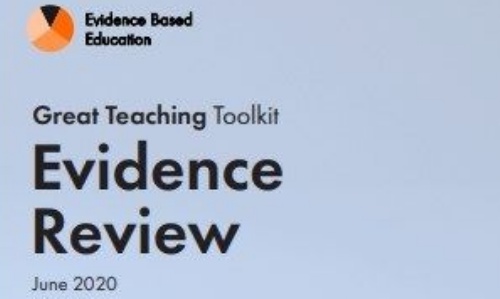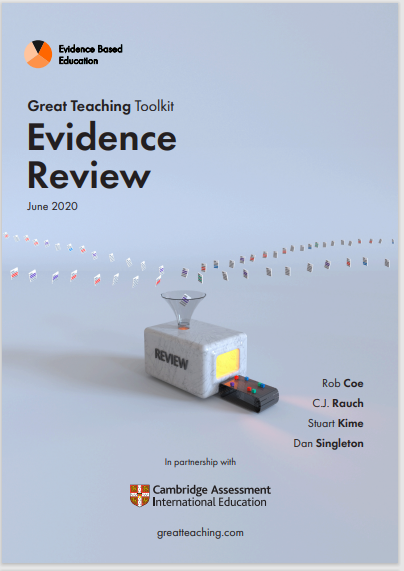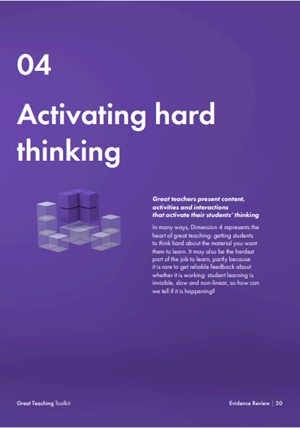Great Teaching Toolkit Evidence Review

This Spotlight article focuses on a resource first published in June 2020 but which may well have been overlooked by teachers and leaders as they necessarily dedicated huge amounts of time and effort to coping with the challenges of day-to-day survival in a pandemic.
 The Great Teaching Toolkit Evidence Review was published by Evidence Based Education (endorsed by the EEF and Research Schools Network) and can be downloaded here: Great Teaching Toolkit: Evidence Review - Evidence Based Education
The Great Teaching Toolkit Evidence Review was published by Evidence Based Education (endorsed by the EEF and Research Schools Network) and can be downloaded here: Great Teaching Toolkit: Evidence Review - Evidence Based Education
Echoing the language of the EEF and RSN, the report aims to address the question “What are the best bets for teachers to invest time and effort in if they want their students to learn more?” and to “help teachers make better decisions about what they can best do to improve their effectiveness.”
Based on a review of existing research studies and frameworks linked to the improvement of teacher effectiveness, the report identifies four priorities for teachers who want to help their students learn more:
- Understand the content they are teaching and how it is learnt
- Create a supportive environment for learning
- Manage the classroom to maximise the opportunity to learn
- Present content, activities and interactions that activate their students’ thinking
Each of these four dimensions is then broken down into ‘elements’ – 17 in total.
An ‘element’ is defined as something that may be worth investing time and effort to work on to build a specific competency, skill or knowledge, or to enhance the learning environment. We all appreciate that teaching is a complex business and cannot readily be broken down into a ‘tick-list’ of components. However, research evidence does reinforce the value of focusing on the development of specific competencies which, when combined, can lead to more impactful teaching and better learner outcomes.
 The document is clearly structured and very readable. Each dimension is headlined with a summary of the key elements, following which each element is expanded with discussion/ guidance on specific aspects of practice. Each section concludes with an accessible summary of the supporting research which contains a plethora of references for those who wish to explore the element more deeply.
The document is clearly structured and very readable. Each dimension is headlined with a summary of the key elements, following which each element is expanded with discussion/ guidance on specific aspects of practice. Each section concludes with an accessible summary of the supporting research which contains a plethora of references for those who wish to explore the element more deeply.
Dimension 4, for example, expands on the elements of structuring, explaining, questioning, interacting, embedding and activation. Each element is explored is its own section averaging 700 words per element.
EBE states that this review report is step one in a much wider process of developing The Great Teaching Toolkit as a growing resource “to help teachers take ownership of their professional learning and to help them enhance their practice for the benefit of students.” A key dimension of this is the subscription-based website and practice sharing platform. However, even without this, the review document provides a useful summary of aspects of practice to which it may well be worth all teachers paying attention.
To read our other Spotlight on Evidence posts, click here.
To sign up to receive new Spotlight on Evidence posts directly to your inbox, click here.
You can download this article below.
